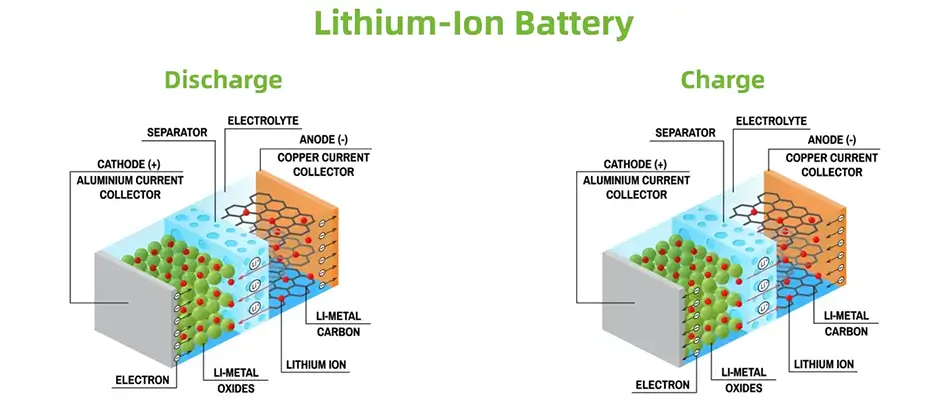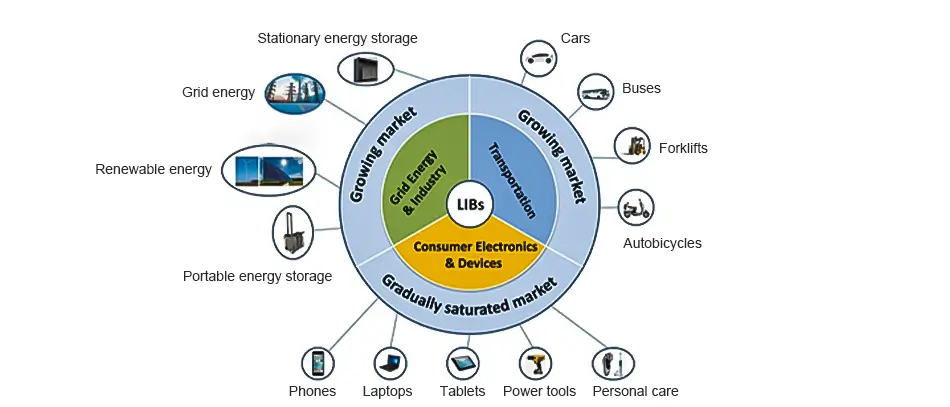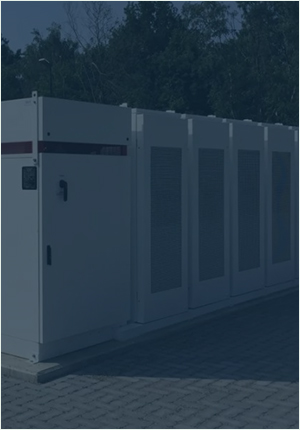2025-02-12 Author : CXJPowers
Lithium-ion batteries are the most popular form of rechargeable battery today, widely used in portable electronic devices, electric vehicles, and renewable energy storage systems. We will take a deep dive into the fundamentals, working principles, advantages and disadvantages, comparisons with other battery technologies, and applications across various industries.
Lithium-ion batteries store and release energy through the movement of lithium ions between the positive and negative electrodes. Due to their high energy density, long lifespan, and lightweight properties, lithium-ion batteries have become the preferred power source for many modern technologies.
A lithium-ion battery primarily consists of the following four components:
1.Cathode (Positive Electrode): Typically made of lithium metal oxides (e.g., LiCoO₂, LiFePO₄).
2.Anode (Negative Electrode): Usually composed of graphite or other carbon-based materials.
3.Electrolyte: An organic solvent containing lithium salts that allows lithium ions to move between the electrodes.
4.Separator: A porous polymer membrane that prevents direct contact between the cathode and anode while allowing ion passage.
How does A Lithium-ion Cell Work?
The working principle of lithium-ion batteries is based on the movement of lithium ions between the cathode and anode. Below is a brief explanation of the process:
1.Charging Process: An external power source applies voltage, causing lithium ions to move from the cathode to the anode, while electrons flow through the external circuit to the anode.
2.Discharging Process: When the battery is connected to a device, lithium ions move back from the anode to the cathode, and electrons flow through the external circuit to power the device.
Advantages:
●High Energy Density: Lithium-ion batteries can store a significant amount of energy, making them suitable for portable devices and electric vehicles.
●Long Cycle Life: They can typically undergo hundreds to thousands of charge-discharge cycles.
●Low Self-Discharge Rate: They lose less charge when not in use.
●Lightweight: Lithium-ion batteries are lighter compared to other battery types.
Disadvantages:
●High-Temperature Sensitivity: High temperatures can degrade battery performance or cause safety issues.
●Risk of Thermal Runaway: In extreme cases, batteries may overheat or even catch fire.
●Higher Cost: Manufacturing costs are higher compared to traditional batteries like lead-acid.
Lithium-ion batteries store and release energy through the movement of lithium ions between the cathode and anode. Below is a detailed explanation of the energy storage process:
1.Charging: An external power source applies voltage, causing lithium ions to de-intercalate from the cathode material, move through the electrolyte, and intercalate into the anode material.
2.Discharging: When the battery is connected to a device, lithium ions de-intercalate from the anode, move back through the electrolyte to the cathode, and intercalate into the cathode material, while electrons flow through the external circuit to power the device.
|
Feature |
Lithium-Ion Batteries |
Lead-Acid Batteries |
|
Energy Density |
High |
Low |
|
Cycle Life |
Long (hundreds to thousands) |
Short (hundreds) |
|
Charging Time |
Fast |
Slow |
|
Weight |
Light |
Heavy |
|
Cost |
High |
Low |
|
High-Temperature Sensitivity |
High |
Low |

Lithium-ion batteries are widely used in multiple industries, including but not limited to:
With continuous technological advancements, the energy density, safety, and cost-effectiveness of lithium-ion batteries are expected to improve further. The application of new materials (e.g., solid-state electrolytes) and advanced manufacturing techniques will drive the widespread use of lithium-ion batteries in more fields.
By gaining a deeper understanding of the fundamentals, working principles, advantages and disadvantages, and applications of lithium-ion batteries, we can better appreciate their crucial role in modern technology and sustainable development.
-------------------
Let me know if you need further adjustments or additional details! We support OEM/ODM. Contact us now!
CXJPowers provides one-stop customized portable power supplies, LiFePO4/ternary lithium battery packs, emergency energy storage solutions, and supports OEM&ODM services.



